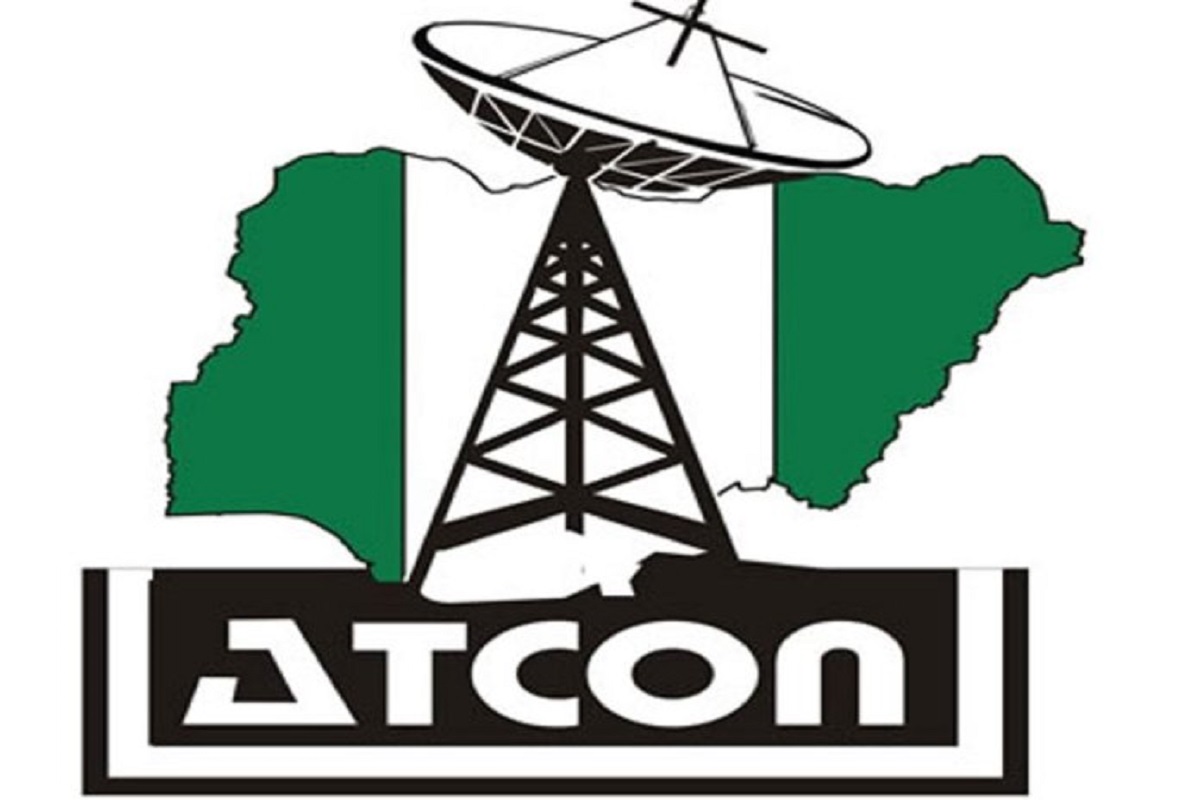Telecom
More than 1Bn People will have Access to 5G Coverage by the End of 2020 – Ericsson

Ericsson projects that four out of every ten mobile subscriptions in 2026 will be 5G. This forecast is included in the latest edition of the Ericsson Mobility Report.

Current 5G uptake in subscriptions and population coverage confirms the technology as deploying the fastest of any generation of mobile connectivity.
The report estimates that by the end of 2020, more than 1 billion people – 15 percent of the world’s population – will live in an area that has 5G coverage rolled out. In 2026, 60 percent of the world’s population will have access to 5G coverage, with 5G subscriptions forecast to reach 3.5 billion.
Ericsson has raised its year-end 2020 estimate for global 5G subscriptions to 220 million, as service providers continue to build out their networks. The increase is largely due to fast uptake in China, reaching 11 percent of its mobile subscription base. This is driven by a national strategic focus, intense competition between service providers, as well as increasingly affordable 5G smartphones from several vendors.
North America is expected to end the year with around 4 percent of its mobile subscriptions being 5G. Commercialization is now moving at a rapid pace and by 2026, Ericsson forecasts that 80 percent of North American mobile subscriptions will be 5G, the highest level of any region in the world.
Europe will end the year with around 1 percent 5G subscriptions in the region. During the year, a number of countries have delayed their auctions of the radio spectrum needed to support 5G deployment.
Fredrik Jejdling, Executive Vice President and Head of Networks, Ericsson, says: “This year has seen society take a big leap towards digitalization. The pandemic has highlighted the impact connectivity has on our lives and has acted as a catalyst for rapid change, which is also clearly visible in this latest edition of the Ericsson Mobility Report.
“5G is entering the next phase, when new devices and applications make the most out of the benefits it provides, while service providers continue to build out 5G. Mobile networks are a critical infrastructure for many aspects of everyday life, and 5G will be key to future economic prosperity.”
The report also highlights why 5G success will not be limited to coverage or subscription numbers alone. Its value will also be determined by new use cases and applications, the first of which have already started to emerge.
Critical IoT, intended for time-critical applications that demand data delivery within a specified time duration, will be introduced in 5G networks. This will enable a wide range of time-critical services for consumers, enterprises and public institutions across various sectors, with 5G public and dedicated networks.
Cloud gaming is another emerging application category. The combined capabilities provided by 5G networks and edge compute technologies will enable game streaming services on smartphones to compete with a quality of experience (QoE) that is on par with PC or console counterparts, opening up for innovative, immersive games based on mobility.
5G functionality grows in both the network and device domains
The rate of introducing 5G New Radio (NR) functionality is increasing, with more than 150 5G device models launched commercially.
Many devices support 5G frequency division duplex (FDD) and dynamic spectrum sharing (DSS). The first 5G standalone (SA) networks have been launched in Asia and North America, as well as the first devices capable of NR carrier aggregation.
FWA offered by more service providers
With the COVID-19 pandemic accelerating digitalization as well as increasing the importance and need for fast and reliable home broadband connectivity, the number of service providers offering fixed wireless access (FWA) is on the rise.
Almost two thirds of service providers now have an FWA offering. FWA connections are forecast to grow more than threefold and reach more than 180 million by the end of 2026, accounting for about a quarter of total mobile network data traffic.
This edition of Ericsson Mobility Report includes four feature articles:
- 2020: the ultimate stress test for FirstNet. Co-written with AT&T
- Service providers face three alternative paths to success
- Mobile cloud gaming – an evolving business opportunity
- The networked industrial enterprise
Telecom
ATCON Commends FG for $2Bn “Project Bridge”, Pledges Support

Association of Telecommunication Companies of Nigeria (ATCON) on Monday commended the Federal Ministry of Communication, Innovation, and Digital Economy (FMCIDE) for spearheading a new initiative known as ‘Project Bridge’.

Tony Emoekpere, president, ATCON, stated in an interview with NAN in Lagos that the initiative aimed to create a robust and resilient telecommunications backbone across Nigeria.
Emoekpere stated that the project was an ambitious public-private partnership designed to connect all 36 states and Abuja, as well as LGAs, via fiber optic cables.
According to him, the initiative is not meant to replace existing infrastructure but to complement it, creating a more resilient network.
“Right now, most of the networks that we have are linear in nature. ’Just imagine, if there’s only one road from Lagos to Ibadan; if anything happens to that road, you would not get to Ibadan.
‘’This project will create alternative routes,” he said.
The ATCON boss stated that the project was modeled after the successful PPP framework in the energy sector, with the government contributing a certain percentage to the Special Purpose Vehicle and the private sector providing the remaining funding.
He stated that the project’s goal was to establish alternative, redundant connections, thereby ensuring that services remained uninterrupted even if one part of the network was compromised.
The president expressed the full support of telcos, noting that the project would enable members to deliver services more effectively in locations where infrastructure was currently a significant challenge.
“With this project, we will have multiple options,” he said.
Project BRIDGE involves building a nationwide fiber optic network to expand digital infrastructure and connectivity, rather than a physical bridge, as part of Nigeria’s National Broadband Plan.
The project is a public-private partnership ($2 billion cost) using an SPV to deploy 90,000km of fiber-optic cable to enhance education, healthcare, and the digital economy.
Telecom
MTN Restores Services After Planned Network Maintenance in Parts of Adamawa, Borno, and Kano

MTN Nigeria has successfully completed a scheduled network maintenance operation that affected 101 sites across 15 Local Government Areas (LGAs) in Adamawa, Borno, and Kano States.

The restoration marks a significant step in the company’s ongoing efforts to enhance service reliability in the Northeast region, amidst multiple fibre cuts and vandalism.
The maintenance, which took place on Sunday, August 24, involved the cutover of traffic to a newly installed fiber span along the AFCOT–Bawo Village route in Adamawa State.
This upgrade was necessary to replace a previously damaged section of the network infrastructure. All service maintenance was done within timeframe and restorations before 1 PM on Sunday August 24th.
We can confirm that all impacted sites have been fully restored, and services are now operating normally. We appreciate our subscribers’ patience and sincerely apologize for any inconvenience caused during the downtime.
The affected services included 2G, 3G, 4G, and enterprise connectivity, with temporary disruptions experienced in LGAs such as Girei, Song, Mubi North, Hong, and Michika in Adamawa; Askira/Uba and Shani in Borno; and Nasarawa in Kano.
The work was scheduled during daylight hours to ensure the safety of field engineers, given the linear and unprotected nature of the route.
This restoration is part of MTN’s broader strategy to strengthen its infrastructure in underserved regions and ensure consistent service delivery across Nigeria, amidst constant fibre cuts and vandalism.
Telecom
TikTok Unveils Artist Insights Platform in Nigeria

TikTok has launched its music insights platform, TikTok for Artists, in Nigeria to support artist growth and fan engagement across the country’s vibrant music industry.

The platform, which debuted globally earlier this year, provides artists, labels, and management teams with access to daily-updated dashboards and analytics tools to track music performance, audience demographics, and fan interactions.
Toyin Mustapha, Head of Music Partnerships for the UK, Ireland, and Sub-Saharan Africa at TikTok, said the initiative was part of the company’s commitment to empowering African creators.
“With the launch of TikTok for Artists in Nigeria, we’re giving artists and their teams access to insights that can help them engage their fans in more meaningful ways and grow their careers globally,” Mustapha said.
The platform offers detailed song performance metrics, including views, posts, and creator engagements per track. It also provides granular post-level data such as likes, comments, shares, and completion rates, alongside demographic breakdowns by gender, age, and language.
In addition to analytics, TikTok for Artists includes educational resources and step-by-step guides to help artists build sustainable careers.
A key feature of the platform is the Pre-Release tool, which allows artists to launch campaigns for upcoming albums and enables fans to pre-save tracks on streaming platforms like Spotify and Apple Music.
British artist Jordan Adetunji described the platform as a “game changer,” noting its value in helping artists and their teams plan effective campaigns.
TikTok said the rollout reaffirms its investment in Africa’s creative economy and aims to foster deeper connections between artists and fans across the continent.
The platform is now available to all certified TikTok Artist Accounts, with access also extendable to managers and label teams.

 E-Financial2 days ago
E-Financial2 days agoFBNQuest Merchant Bank Facilitates Landmark ₦5Bn Commercial Paper Programme for Accion Microfinance Bank

 E-Business2 days ago
E-Business2 days agoNDPC Begins Probe of Banks, Others for Data Breaches

 Telecom2 days ago
Telecom2 days agoDigital Realty Commits to Africa’s Digital Transformation @ Launch of LKK2 Data Center

 Telecom2 days ago
Telecom2 days agoIntel–U.S. Partnership Reshapes Semiconductor Landscape with Historic Equity Agreement

 E-Financial2 days ago
E-Financial2 days agoUBA to Deepen Financial Inclusion, Boost Savings’ Culture with Super Savers’ Promo

 Telecom2 days ago
Telecom2 days agoNITDA Alerts Nigerians to eSIM Security Flaw Deployed to Hijack Devices Worldwide

 E-Financial2 days ago
E-Financial2 days agoNigeria Leads Africa in Stablecoin Adoption with $22Bn in Transactions

 E-Financial2 days ago
E-Financial2 days agoFidelity Bank Resumes Intl Transactions on Naira Debit Cards



























